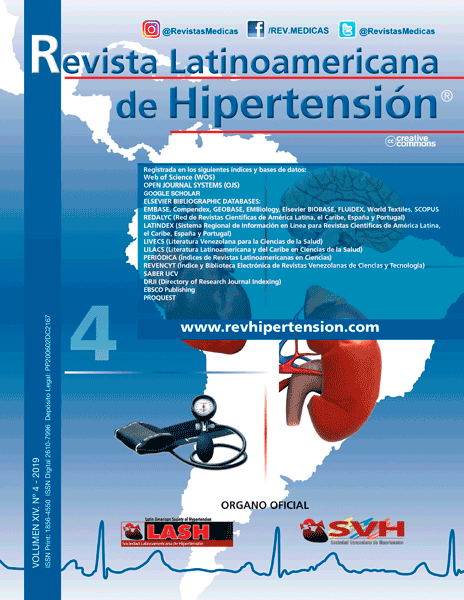Patency rate and factors affecting the clinical outcome of patients with aortoiliac artery occlusion undergoing intra-arterial stenting
Palabras clave:
Aortoiliac artery occlusion, patency rate, endovascular stenting, intraarterial stenting.Resumen
Background Occluding plaques are commonly found inthe infrarenal aorta and the iliac artery in patients with peripheralarterial disease (PAD). Aortoiliacocclusive disease(AIOD) occurs commonly in patients with PAD.Methods: This is a prospective study was carried out between2015 and 2017 in Sina hospital. Patients with occlusionin aortoiliac artery and its branches were included.Stent was placed for patients, if they had any obstructionor stenosis in aortoiliac artery in angiography. Patientswere examined in terms of clinical status and ABI calculationand underwent Color Doppler ultrasound of aortoiliacartery to determine patency rate at 1, 3, 12, and 24months after stent placement.Results: The mean age of patients was 64.60 (±10.41).The main symptoms of the patients were claudication(41.8%), ulcer (27.3%), pain at rest (20%), and gangrene(20%). The lesion was bilateral in 21 patients (38.2%).According to TASC stratification, lesions were of type A in26 patients (47.3%), type B in 4 patients (7.3%), type Cin 5 patients (9.1%), and type D in 20 patients (36.4%).The six-month, one-year, and two-year patency rates were89.1%, 83.6%, and 72.7%, respectively. The mean annualABI of patients was 0.79 (±0.11) and two year ABIwas 0.68 (±0.1).Conclusion: It seems that stenting and angioplasty areeffective in improving patients’ conditions and result in agood short and medium-term patency.Descargas
Los datos de descargas todavía no están disponibles.

